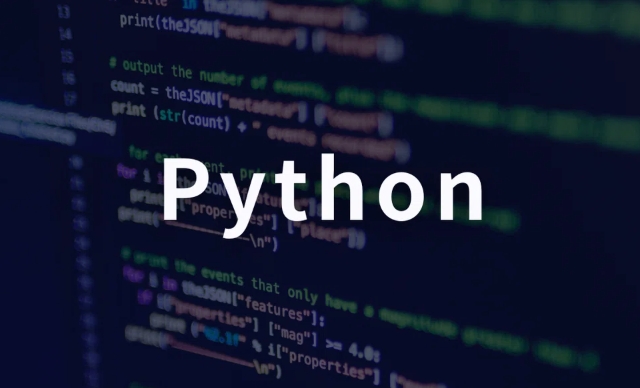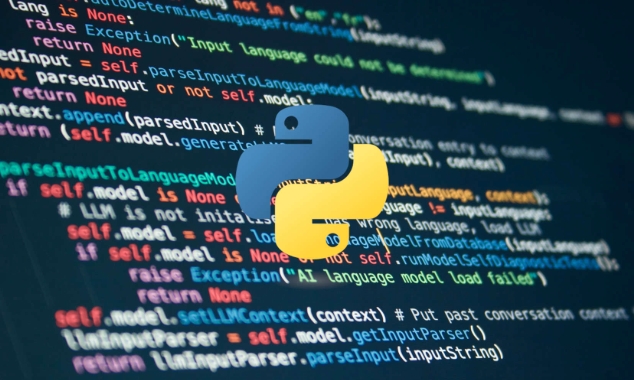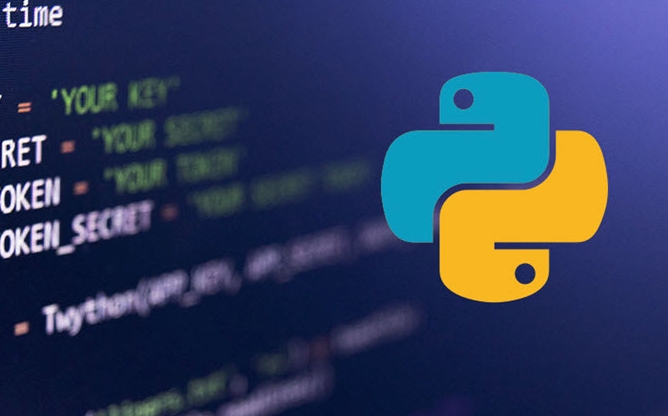Decorators are special functions in Python used to modify or enhance function behavior, and their core lies in closures and function nesting. 1. The decorator is essentially a higher-order function that accepts functions as parameters and returns new functions; 2. The basic decorator implements functional extensions by defining internal wrapper functions, such as adding log output before and after function execution; 3. To support any parameters of the decorator function, args and *kwargs need to be passed; 4. If the decorator itself needs to receive parameters, it needs to adopt a three-layer nested structure; 5. Use functools.wraps to retain the meta information of the decorating function (such as name and document string) for easy debugging and document generation. After mastering these key points, you can gradually write various decorators from simple to complex.

It is actually not difficult to write a Python decorator. The core is to understand that it is essentially a function that is used to modify the behavior of other functions or classes without modifying its source code. The key to a decorator is closures and function nesting. After mastering these two points, it will be easy to use.

What is a decorator
Simply put, a decorator is a function that accepts a function as an argument and then returns a new function. You can think of it as a way to "add functions" to a function.
To give the simplest example: you have a function that wants to print log information before and after execution. At this time, you can write a decorator to handle it uniformly, instead of adding print to each function.

def my_decorator(func):
def wrapper():
print("Before function call")
func()
print("After function call")
Return wrapper
@my_decorator
def says_hello():
print("Hello")
say_hello()Output result:
Before function call Hello After function call
How to decorate with parameters
The above example can only handle functions without parameters. If the function you want to decorate has parameters, then make wrapper support any parameters.

def my_decorator(func):
def wrapper(*args, **kwargs):
print("Before function call")
result = func(*args, **kwargs)
print("After function call")
return result
Return wrapper
@my_decorator
def greet(name):
print(f"Hello, {name}")
greet("Alice")In this way, no matter how many parameters the objective function has, it can run normally.
How to write a decorator with parameters
Sometimes you want the decorator itself to receive parameters, such as control behavior switches or configuration options. At this time, three layers of nested functions are needed.
def repeat(times):
def decorator(func):
def wrapper(*args, **kwargs):
for _ in range(times):
func(*args, **kwargs)
return None
Return wrapper
Return decorator
@repeat(3)
def says_hi():
print("Hi")
say_hi()This decorator will cause the function to execute a specified number of times. You can adjust the logic as needed, such as adding a delay, recording logs, etc.
Use functools.wraps to preserve meta information
When you finish writing the decorator, you may find that the decorating function name has changed or the document string has been lost. This is because the decorator replaces the function object.
The solution is to use functools.wraps from the standard library:
from functools import wraps
def my_decorator(func):
@wraps(func)
def wrapper(*args, **kwargs):
print("Doing something before")
return func(*args, **kwargs)
Return wrapperAfter adding this, the function name, docstring and other information will not be lost, which is very helpful for debugging and automatic document generation.
Basically that's it. The decorator looks a bit tangled, but as long as you remember that it is a "function wrapping function" and step by step, it is not difficult to understand. At the beginning, you can start with writing without parameters, and then slowly expand to the situation where parameters and decorator parameters are supported.
The above is the detailed content of How to create a Python decorator. For more information, please follow other related articles on the PHP Chinese website!

Hot AI Tools

Undress AI Tool
Undress images for free

Undresser.AI Undress
AI-powered app for creating realistic nude photos

AI Clothes Remover
Online AI tool for removing clothes from photos.

Clothoff.io
AI clothes remover

Video Face Swap
Swap faces in any video effortlessly with our completely free AI face swap tool!

Hot Article

Hot Tools

Notepad++7.3.1
Easy-to-use and free code editor

SublimeText3 Chinese version
Chinese version, very easy to use

Zend Studio 13.0.1
Powerful PHP integrated development environment

Dreamweaver CS6
Visual web development tools

SublimeText3 Mac version
God-level code editing software (SublimeText3)
 How to handle API authentication in Python
Jul 13, 2025 am 02:22 AM
How to handle API authentication in Python
Jul 13, 2025 am 02:22 AM
The key to dealing with API authentication is to understand and use the authentication method correctly. 1. APIKey is the simplest authentication method, usually placed in the request header or URL parameters; 2. BasicAuth uses username and password for Base64 encoding transmission, which is suitable for internal systems; 3. OAuth2 needs to obtain the token first through client_id and client_secret, and then bring the BearerToken in the request header; 4. In order to deal with the token expiration, the token management class can be encapsulated and automatically refreshed the token; in short, selecting the appropriate method according to the document and safely storing the key information is the key.
 Explain Python assertions.
Jul 07, 2025 am 12:14 AM
Explain Python assertions.
Jul 07, 2025 am 12:14 AM
Assert is an assertion tool used in Python for debugging, and throws an AssertionError when the condition is not met. Its syntax is assert condition plus optional error information, which is suitable for internal logic verification such as parameter checking, status confirmation, etc., but cannot be used for security or user input checking, and should be used in conjunction with clear prompt information. It is only available for auxiliary debugging in the development stage rather than substituting exception handling.
 How to iterate over two lists at once Python
Jul 09, 2025 am 01:13 AM
How to iterate over two lists at once Python
Jul 09, 2025 am 01:13 AM
A common method to traverse two lists simultaneously in Python is to use the zip() function, which will pair multiple lists in order and be the shortest; if the list length is inconsistent, you can use itertools.zip_longest() to be the longest and fill in the missing values; combined with enumerate(), you can get the index at the same time. 1.zip() is concise and practical, suitable for paired data iteration; 2.zip_longest() can fill in the default value when dealing with inconsistent lengths; 3.enumerate(zip()) can obtain indexes during traversal, meeting the needs of a variety of complex scenarios.
 What are Python type hints?
Jul 07, 2025 am 02:55 AM
What are Python type hints?
Jul 07, 2025 am 02:55 AM
TypehintsinPythonsolvetheproblemofambiguityandpotentialbugsindynamicallytypedcodebyallowingdeveloperstospecifyexpectedtypes.Theyenhancereadability,enableearlybugdetection,andimprovetoolingsupport.Typehintsareaddedusingacolon(:)forvariablesandparamete
 What are python iterators?
Jul 08, 2025 am 02:56 AM
What are python iterators?
Jul 08, 2025 am 02:56 AM
InPython,iteratorsareobjectsthatallowloopingthroughcollectionsbyimplementing__iter__()and__next__().1)Iteratorsworkviatheiteratorprotocol,using__iter__()toreturntheiteratorand__next__()toretrievethenextitemuntilStopIterationisraised.2)Aniterable(like
 Python FastAPI tutorial
Jul 12, 2025 am 02:42 AM
Python FastAPI tutorial
Jul 12, 2025 am 02:42 AM
To create modern and efficient APIs using Python, FastAPI is recommended; it is based on standard Python type prompts and can automatically generate documents, with excellent performance. After installing FastAPI and ASGI server uvicorn, you can write interface code. By defining routes, writing processing functions, and returning data, APIs can be quickly built. FastAPI supports a variety of HTTP methods and provides automatically generated SwaggerUI and ReDoc documentation systems. URL parameters can be captured through path definition, while query parameters can be implemented by setting default values ??for function parameters. The rational use of Pydantic models can help improve development efficiency and accuracy.
 How to test an API with Python
Jul 12, 2025 am 02:47 AM
How to test an API with Python
Jul 12, 2025 am 02:47 AM
To test the API, you need to use Python's Requests library. The steps are to install the library, send requests, verify responses, set timeouts and retry. First, install the library through pipinstallrequests; then use requests.get() or requests.post() and other methods to send GET or POST requests; then check response.status_code and response.json() to ensure that the return result is in compliance with expectations; finally, add timeout parameters to set the timeout time, and combine the retrying library to achieve automatic retry to enhance stability.
 Python variable scope in functions
Jul 12, 2025 am 02:49 AM
Python variable scope in functions
Jul 12, 2025 am 02:49 AM
In Python, variables defined inside a function are local variables and are only valid within the function; externally defined are global variables that can be read anywhere. 1. Local variables are destroyed as the function is executed; 2. The function can access global variables but cannot be modified directly, so the global keyword is required; 3. If you want to modify outer function variables in nested functions, you need to use the nonlocal keyword; 4. Variables with the same name do not affect each other in different scopes; 5. Global must be declared when modifying global variables, otherwise UnboundLocalError error will be raised. Understanding these rules helps avoid bugs and write more reliable functions.






